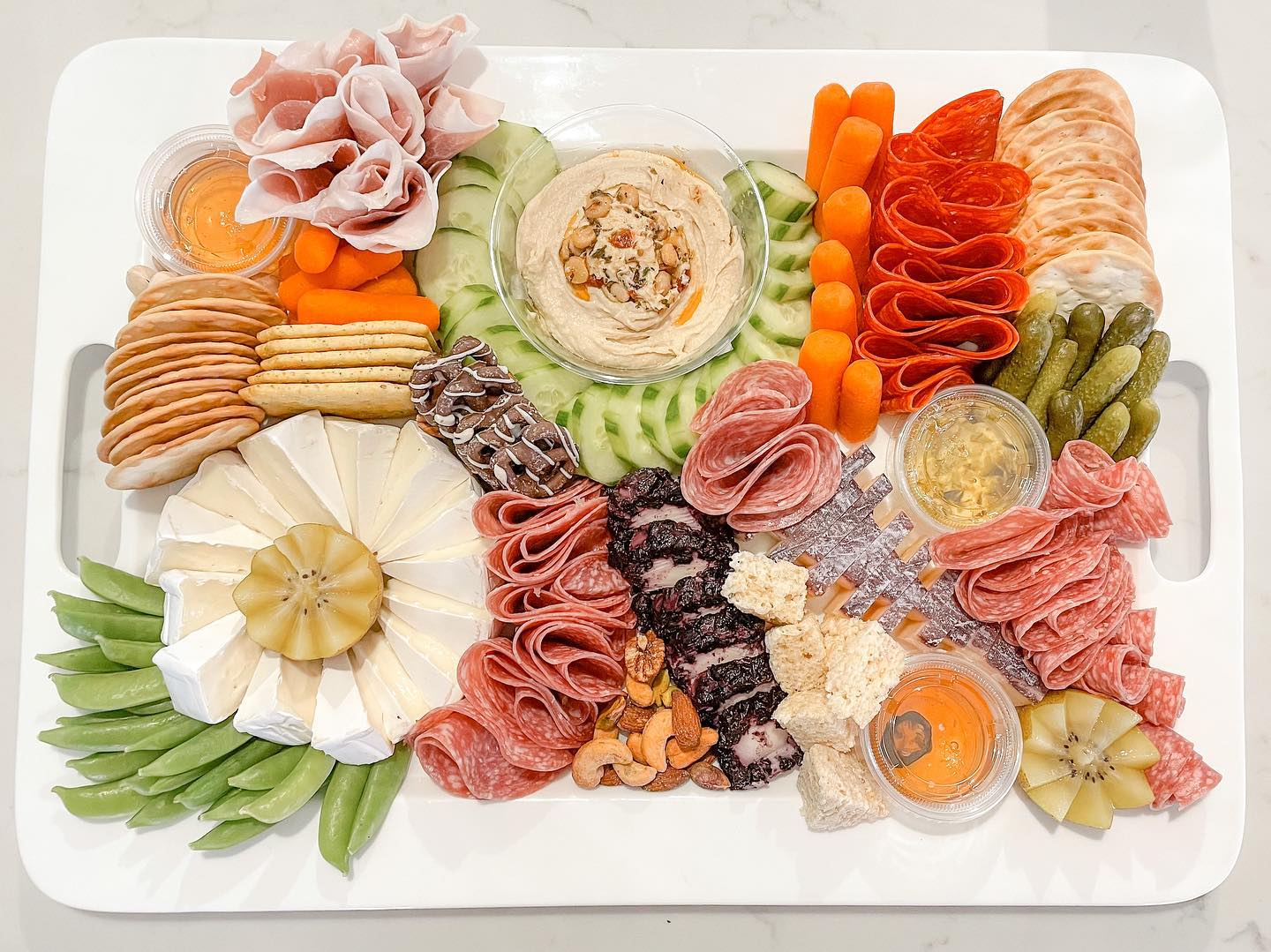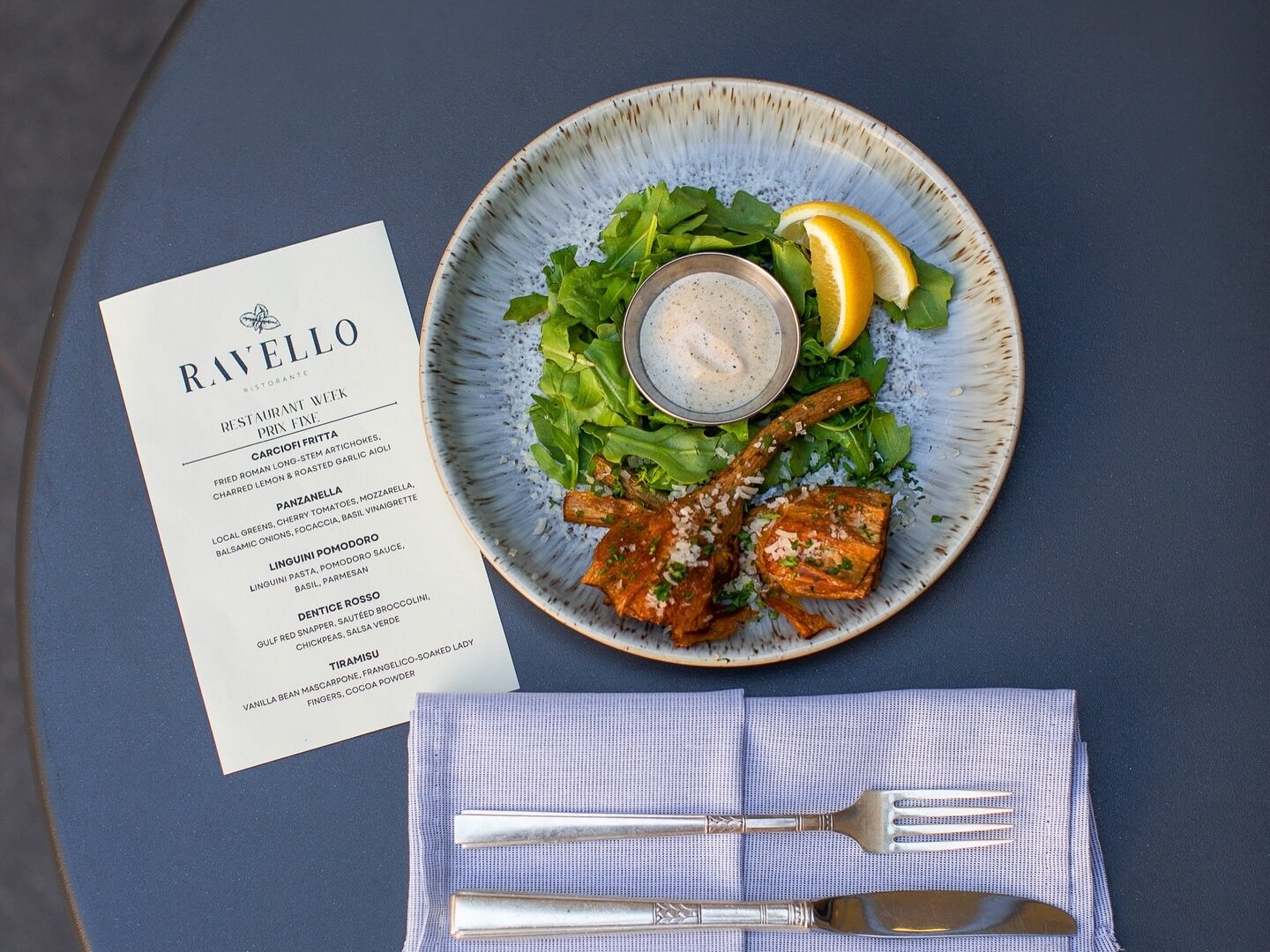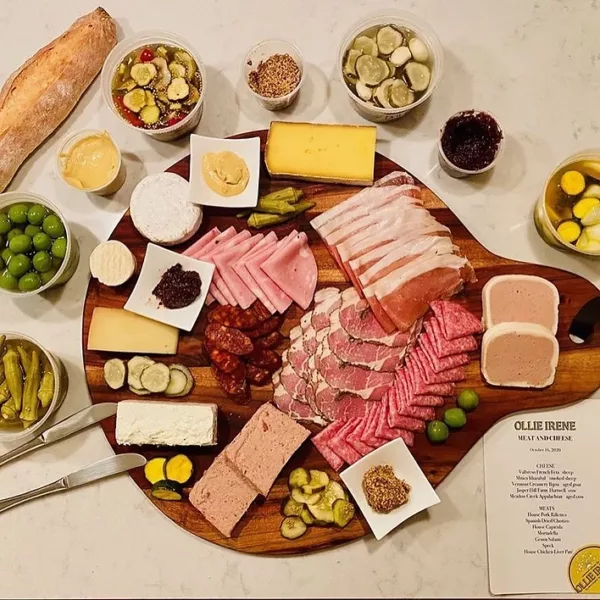
(ollieirene.com)
Charcuterie boards are perfect for holiday celebrations. They are versatile, providing a nosh for cocktails and conversation or serving as the evening’s culinary centerpiece. They are adaptable to the gathering’s theme and guest list. And, they’re downright trendy right now.
Charcuterie literally refers to flavor-packed meats, often pork, that are cured or otherwise preserved. But today’s charcuterie boards are more inclusive, a complementary collection of cured meats, select cheeses, and both sweet and savory accompaniments.
Well-composed boards are visual treats, scrumptious mosaics of shapes, colors, and textures. The diversity of their components, including nuts, olives, fruit, and pickles, guarantees that everyone will find something they like.
You can pick up a pre-made board from select restaurants, markets, and caterers (some recommendations are listed below). Or seek out a retailer with a good selection of cheeses and meats to create your own.
SoulGrown asked John Litzinger, head cheese monger at The Son of a Butcher market in Birmingham, to share tips for putting together DIY boards.
The full-service shop at the Market at Pepper Place carries a wide selection of domestic and European cheeses, and several types of air-cured hams and salamis, along with add-ons.
Start your planning with a head count, Litzinger says. Think in terms of three different cheeses and meats for smaller groups, and five each for larger gatherings. Plan on one ounce to two ounces per person of each meat and cheese, depending what else will be served.
Next step: the cheeses. You want different textures—soft, medium, hard, crumbly, or creamy. Mix the milks they’re made from, too.
“That’s where you’re going to get the most diversity,” Litzinger says. “You could literally put three goudas on the board–one made with cow milk, one made with sheep and one made with goat. The texture is going to be slightly different and the taste will be vastly different.”
To whittle the cheese choices, think of what your guests don’t like. If they go bleh to blue, toss those cheeses out. Pungent cheese, such as washed-rind types, are a turn-off for some. When in doubt, leave them out.
Vary the way you present them, too, perhaps crumbling a cheddar or blue and cutting a hard cheese like Manchego into little triangles, Litzinger says.
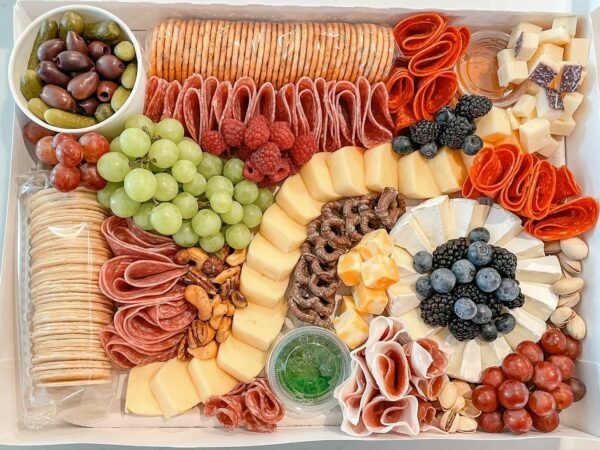
(Brie’Ham Grazing Co./Facebook)
Diversity is also important in the meat selection. For general holiday entertaining don’t do multiples of a single type of air-dried hams, salamis, or preparations like pates and terrines. (On other occasions, a comparison of different approaches within those charcuterie families would be an appealing idea.)
The thinly sliced meats allow for creative presentation—a rose from folded salami “petals” or wavy stacks of ham. For an adventurous group, consider including a high-quality canned fish, Litzinger says.
Take your meat and cheese choices into account when picking the accompaniments that will round out the board. Walnuts go well with blue cheese, while almonds pair best with medium-firm cheeses. Sweet flavors like jam, honey, and fruit (use both fresh and dried) complement the earthiness of cloth-bound aged cheddar.
The acidity in pickled vegetables helps cut through the fat of triple-cream cheese, salami, or pate. “You can do pickled okra,” Litzinger says. “You can go sweet or spicy. Red peppadews, which are sweet and spicy, are great with goat cheeses. They work really well together.”
Don’t feel like you must follow the crowd and add crackers or sliced baguette for guests to use as platforms for their meats and cheeses, Litzinger says. Fruits and walnut or pecan halves can serve that role, too.
“I think a lot of people stress too much,” he says. “Ultimately if you stick to the idea of varying textures and varying milk types with a nice array of other items on the board, you’re going to be happier than if you stress out about finding the perfect thing for the board.”
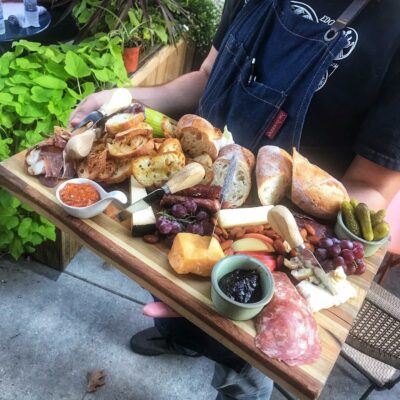
(Domaine South/Facebook)
Board Building Basics (mix and match options to your preference):
Cheeses
Bloom rind: Brie, Camembert, Delice de Bourgogne
Soft: Mozzarella/Burrata, fresh goat cheese, Feta
Blue: Gorgonzola, Roquefort, Stilton
Washed rind: Tallegio, Epoisses
Medium: alpine/mountain cheeses, Tomme
Aged: Parmigiano-Reggiano, cloth-bound Cheddar, three-year Gouda
Meats
Air-dried: Prosciutto, Speck, Jamon Iberico, Coppa/Capocollo
Salamis: Sopressata, Genoa, Spanish chorizo
Prepared: Rilettes, Pates and Terrines, spreadable fermented ’Nduja
Accompaniments:
Crunchy: Pickled vegetables, nuts (Spanish Marcona almonds are popular)
Sweet: Fresh fruit, dried fruit, spreads like jam, honey
Savory: Olives, stone-ground mustard
Platforms: Crackers, sliced baguette, fresh fruit
Where to Buy the Supplies:
Domaine South Huntsville
The Cheese Cottage Mobile
The Son of a Butcher Birmingham
Where to Find Pre-made Boards to Go:
Ollie Irene in Mountain Brook
Brie-Ham Grazing Co. in Birmingham
Cured and Company in Huntsville
